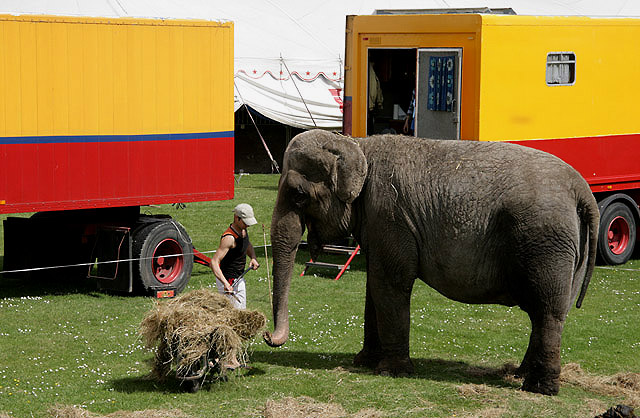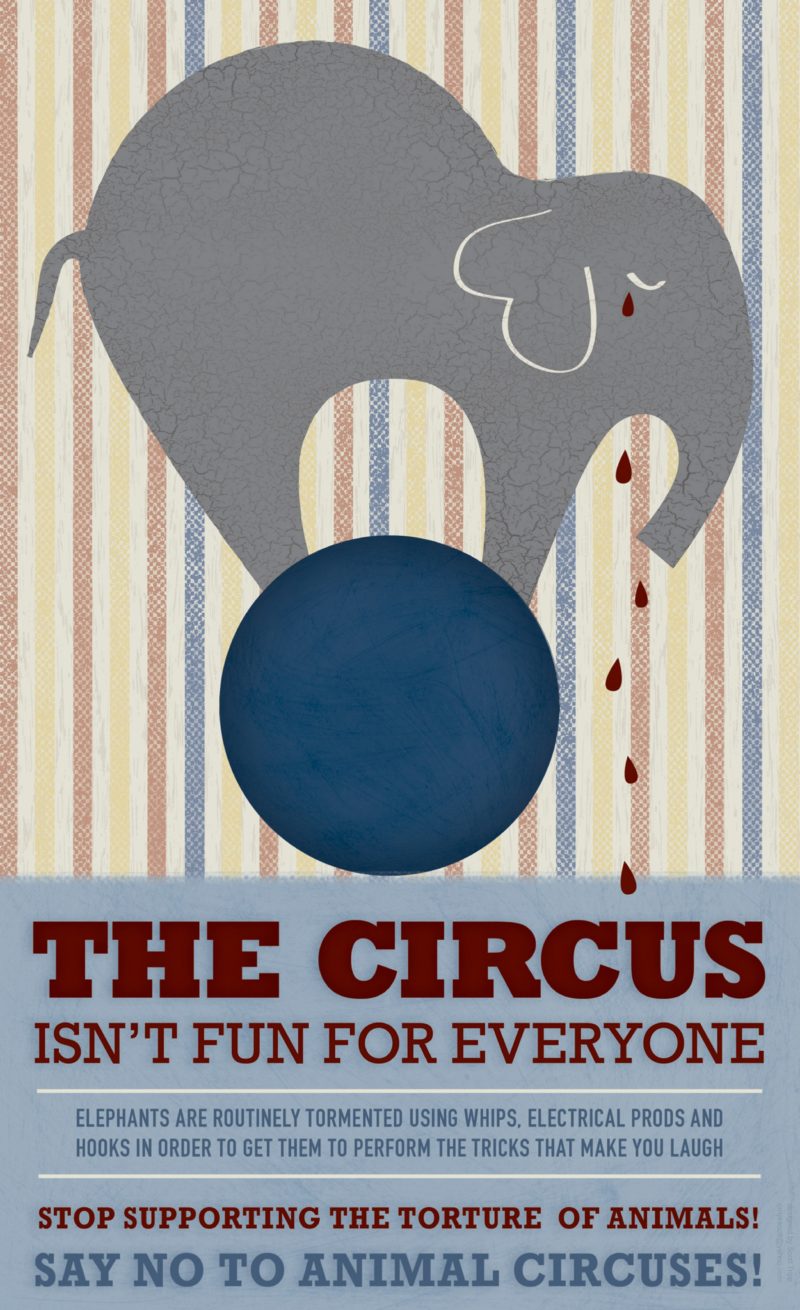Title image: Elephant Circus Poster, designed by Scott Tripp, CC License
Like many people last week, I was over the moon to hear that Italy has just banned the use of all animals in circuses and travelling shows. But my elation turned to embarrassment as I wondered why my own country, supposedly a world leader in animal welfare, has yet to introduce the same policy. The British public were promised by David Cameron that a ban on wild animals in circuses in England and Wales would take effect by January 2015. Yet almost three years on from that deadline, we see no progress in actually delivering on this promise. According to Defra, work on the bill to ban wild animals (note, not all animals) in the circus remains ‘a work in progress’. Why, in a country so proud of our welfare standards, is the government dragging its feet on such an obvious example of needless animal cruelty?

I took some time to look into our own UK legislation on the use of animals in circuses. Turns out, we base our intervention and policy on an act drawn up almost a century ago. The Performing Animals (Regulations) Act (PARA) of 1925 continues to regulate the exhibition and training of performing animals in the UK – ‘exhibit’ meaning any public entertainment (free or paid for). If a company or individual wants to exhibit or train an animal for public performance, they have to apply for a licence through their local authority. Applications have to specify the details of the animals and performances, and the resulting certificate must be open for inspection (by the general public as well as the inspecting authority). Of course, if a performing animal is found to be being mistreated, the court can prohibit training or exhibition.
Yet this legislation seems hugely flawed; on the grounds that emotion shouldn’t ‘displace the need for evidence’ there is a limit as to when and where an inspecting officer can interrupt a performance – so no officer can actually go on or behind stage during a public performance of performing animals. This means that exposure of cruel conditions or treatment most often falls to undercover animal rights groups. I don’t know about you, but I’d consider that a performance that causes negative emotion in the viewer is already a cause for concern, with or without ‘evidence’.

Italy isn’t a forerunner in banning performing animals: eight years ago, Bolivia enacted the world’s first ban on all animals in circuses. While a handful of other countries had long banned the use of wild animals (not the UK), the Bolivian ban included domestic animals too. Taking effect on 1 July 2009, it stated that the use of animals in circuses “constitutes an act of cruelty” (uh huh) and gave operators a year to comply. Interestingly, the ban was prompted by an undercover investigation by Animal Defenders International, who found widespread abuse in circuses operating in Bolivia. This is the very same group who had Scottish circus owner Bobby Roberts convicted in 2011 for his abuse of 58-year-old elephant Anne, here in the UK. This case led to mass public protest against the use of animals in circuses in Britain; in fact, PETA figures show that 94 per cent of people in England and Wales are in favour of a ban. Yet politicians claimed they couldn’t outlaw the practice because it would contravene the Human Rights Act. What about the rights of the vast majority of the population, who demand an end to the cruel humiliation of wild animals for entertainment? What about the rights of animals like Anne (below)?

Happily, justice for Anne was delivered by the British people, who rallied to her aid, raising £410,000 to give her a haven in Longleat Safari Park‘s £1.2 million elephant mansion. She has 1,000 square yards of deep sand floors to roam on, a wealth of natural light, nearly two acres of gardens, a plunge pool and parkland views. Anne, now the oldest elephant in Europe, is finally living the life she deserves. Yet other UK performing animals aren’t so lucky. Though there have been several attempts to change the law since Anne, with actual legislation drafted and scrutinised back in 2013, the UK government has failed to act.
In a society where animals are supposedly recognised as sentient beings and given legal ‘identity’ by the Animal Welfare Act, this delay is totally unacceptable. Surely it’s time to stop defending animals in circuses as ‘lawful’ simply because they’ve been allowed in the past. The Italian ban, and the bans in many other countries before this, shows that circus animals – wild or otherwise – are no longer morally acceptable entertainment. That the government continues to grant licences to people wishing to train and exhibit them is horrendously outdated, and completely embarrassing.
